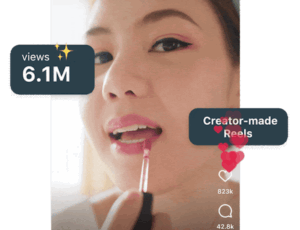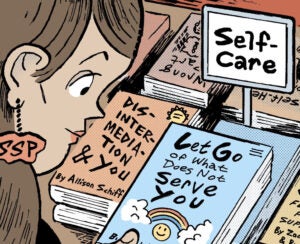 “Data-Driven Thinking” is written by members of the media community and contains fresh ideas on the digital revolution in media.
“Data-Driven Thinking” is written by members of the media community and contains fresh ideas on the digital revolution in media.
Today’s column is written by Jay Friedman, chief operating officer at Goodway Group.
If you’ve been through an IPO before, you know how delicate the initial pricing is. If it’s too high, the stock doesn’t get a pop on the first day to allow for insiders to get big gains. Too low and the company doesn’t get the cash it needs or perhaps deserves.
If Snap Inc.’s pre-IPO speculation of a $30 billion valuation is true, and the investors get their initial pop, let’s say that at the end of today the company’s valuation will reach $38.9 billion. That gives us a convenient jumping-off point for this discussion because, as of the time of writing, that’s exactly 10% of Facebook’s valuation. Is this fair proportionality?
| Snapchat | Observation | ||
| 2016 Ad Revenue | $26.9 billion | $367 million | Snapchat is just ramping up |
| Daily Active Users | 1.23 billion | 153 million | More than 10% of FB’s |
| Average time spent per month per user | 1,358 minutes (comScore) | 438 minutes (comScore) | Way more than 10% of FB’s |
| Average number of times app checked per day | 13.8 | 18 | Stickiness is key |
At first this doesn’t look so bad. But then you remember those daily active users and minutes-per-day figures. Those are just the Facebook network itself. They don’t include Instagram, which, alone, has larger reach and nearly the same minutes per day usage as Snapchat, WhatsApp – 1 billion monthly active users vs. Snapchat’s 301 million – or Oculus VR.
Furthermore, Snapchat has few, if any, features that can’t be replicated. This was clearly the case with Stories. Snapchat’s Stories views are down since Instagram launched a clone of the feature. Snapchat’s other big features are its photos’ lack of permanence – they disappear – and Snapstreaks, which are digital rewards for users snapping back and forth with each other daily.
As an aside, these Snapstreaks are serious stuff. When kids get punished and have their phones taken away, it’s common for them to give their login credentials to a friend to “keep the streaks alive.” I even personally know someone in my kids’ circles who stopped being friends offline – in the real world – because the other person broke the streak they had with each other.
But both features can be copied in Instagram or another platform without much trouble. Heck, even WhatsApp, which is known purely as a chat platform, just launched Status, a Stories-like feature. Snapchat does have messaging but, of course, so do 100 other platforms.
What about Snap’s hardware, the Snap Spectacles? So far, not so good.
How about brand experience from a marketer’s perspective? Sit with any teenager working their way through the snaps on their phone and you won’t be impressed.
First, a whole lot of snaps are pictures of just parts of other people’s faces or something else random just to keep the streak alive. Second, kids don’t spend more than a half a second looking at any single picture, even when the picture is a real one. Marketers will quickly become disillusioned about Snapchat as a marketing platform if they realize ads are being skipped after less than a half of a second, far less than IAB’s standard for determining an ad was in view.
AdExchanger Daily
Get our editors’ roundup delivered to your inbox every weekday.
Daily Roundup
But what about the custom filters, where consumers can overlay a brand experience on their face? Whether other platforms copy this feature outright or come up with a good enough feature of their own, marketers won’t have to look to Snapchat exclusively for this kind of engagement for long.
Even if the overlay is the saving grace, to generate 10% of Facebook’s annual $2.7 billion income, Snapchat would need every daily active user to use a custom filter every day of the year and also to figure out how to charge marketers a $46.82 CPM. There isn’t a marketer on Earth that would pay that on an ongoing basis.
As Snap Inc. files for its IPO today, to me it feels more like Twitter than Facebook.
Follow Jay Friedman (@jaymfriedman) and AdExchanger (@adexchanger) on Twitter.












